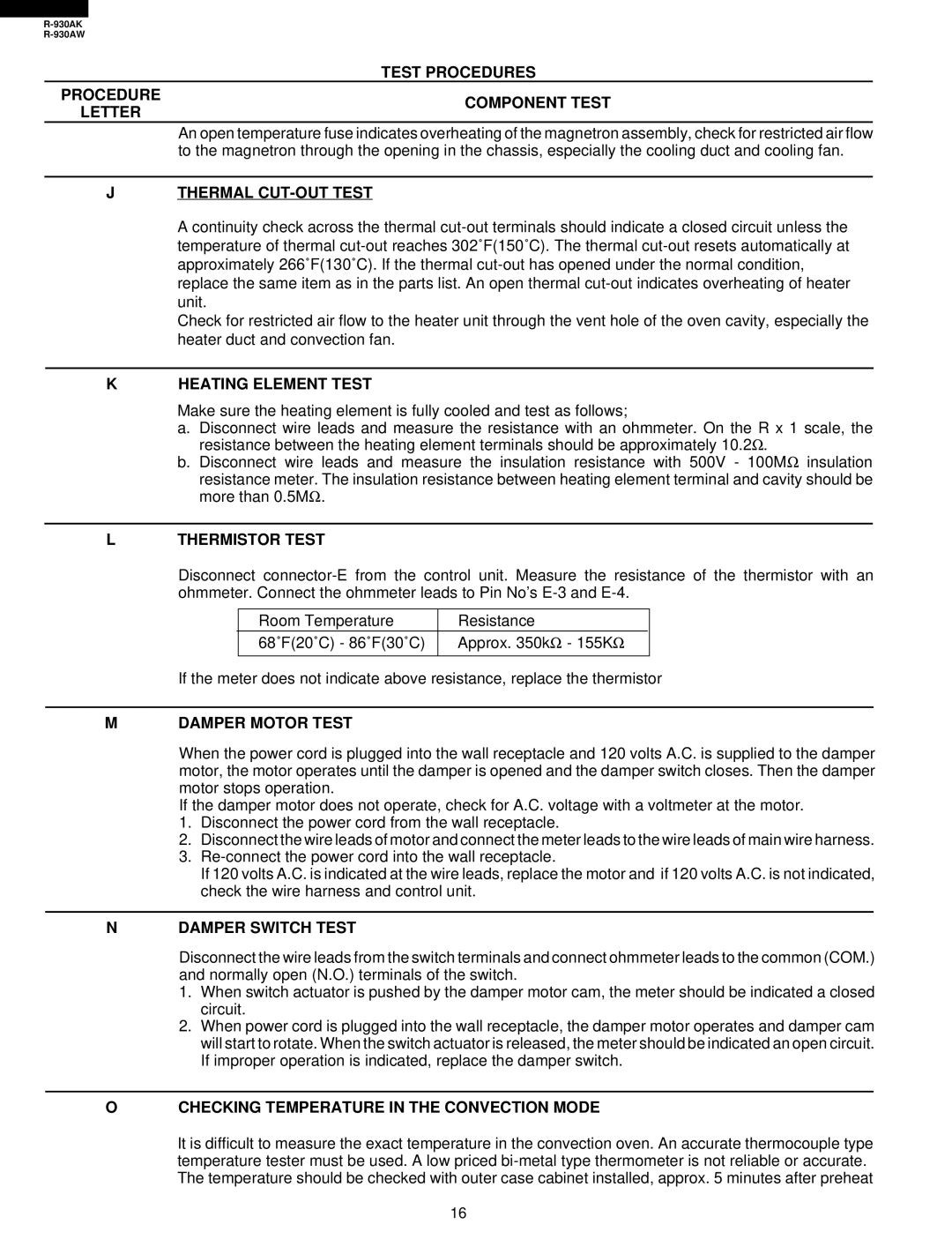R-930AW specifications
The Sharp R-930 series of microwave ovens, including the R-930AK, R-930AW, and R-930CS models, represent a blend of advanced technology and user-centric design. These units are well-suited for modern kitchens, offering convenience, versatility, and efficiency that meet the needs of busy households.One of the standout features of the R-930 series is the powerful Inverter Technology. Unlike traditional microwaves that rely on pulsing power to cook food at lower settings, Inverter Technology delivers a steady stream of cooking power. This results in more even heating, improved texture, and better overall cooking results for delicate dishes like custards and sauces.
The spacious interior of these models provides ample room for cooking a variety of dishes simultaneously. The R-930 series is designed with a turntable that ensures uniform cooking by rotating food as it heats. Additionally, these microwaves often come with a variety of pre-programmed settings for popular dishes, making it easier for users to prepare meals with minimal effort. These presets take the guesswork out of cooking and help ensure consistent results every time.
The R-930AK and R-930AW models are particularly noted for their sleek and modern aesthetic, available in stylish black and white exteriors, respectively. Both models also feature user-friendly controls, which include a digital display and intuitive buttons, ensuring that even those new to microwave cooking can navigate settings with ease.
Another characteristic that distinguishes the R-930CS is its advanced sensor cooking technology. This feature monitors the cooking process and automatically adjusts power levels and cooking times to achieve optimal results. This takes the hassle out of determining how long to cook various foods, especially those that require specific attention to avoid overcooking or undercooking.
The Sharp R-930 series also emphasizes safety and convenience. Child safety locks are integrated into the design to prevent unauthorized use, making it a practical choice for families with young children. Moreover, the easy-clean interior ensures that spills and splatters can be quickly wiped away, maintaining hygiene and preserving the appliance's appearance.
In summary, the Sharp R-930AK, R-930AW, and R-930CS models are proficient microwave ovens equipped with innovative technologies and thoughtful features that cater to a variety of cooking needs. With their combination of inverter cooking technology, spacious interiors, sleek designs, and user-friendly controls, these models are ideal choices for anyone looking to enhance their culinary capabilities in a fast-paced world.

